This sort of civilisation (referring to the AMVC Model) is capable of doing things that we find difficult to accept, that we may find mysterious, all in all appearing staggering to our segregated minds. Some civilisations did leave structures on our planet, traces and marks, evidently even on Mars, most probably elsewhere inside our solar system. Why ? What can we sort out from those ? Again, it is a long work. An extensive study throughout the work of other individuals, requiring gathering, analysis, comparing and verifying their many findings.
Someone, among those who did put great efforts to get a realistic picture about what was happening, came up with an amazing summary that still is the only logical explanation yet. Henri Bordeleau was interested to a singular aspect of the phenomenon, between 1950 and 1979.
[ Édition du jour ; Québec, 1966 / Nefer ; Québec, 1970 ]
In this period, groups of 10 to 20 Outer Foreigners were arriving into the Earth’s magnetosphere assembled in a comet like shaped formation. Near the atmosphere, they were spreading out and went in different directions. It looked like a comet explosion entering the atmosphere. But there was no comet at all. The following days, foreigner’s usual vessels were seen near cities. Other different and peculiar vehicles were spotted at night far from there, causing all sorts of electromagnetic effects, around certain lakes and particular sites. About a week or so later, a huge triangular "thing" was seen leaving our atmosphere. Henri Bordeleau wanted to know what all that was about. He did a broad study on every cases related to this type of event.
Here is what his findings did lead us to comprehend.
In the Outer Foreigner’s society, the requirements of basic materials are not very high. They constantly re-use the same metals. Their method of integral recycling admirably respects the natural balance of the ecosystem. They do not insert anything in the medium and do not withdraw anything from it, in order to preserve the proportion of the elements, which maintain the harmony of the exchanges within the ecological cycle. They handle and transform the matter according to their needs. In agriculture, a complex procedure for rotation of crops makes it possible for the soil to continuously renew its organic matter. When they must extract raw material, the ion exchange technique takes atoms of the element in question directly, one by one, without disturbing the medium. Specific circumstances compel them to extract elements from other planets. A situation of local shortage occurs when the surplus is exhausted. Taking away elements would lead to a chemical unbalance in the medium. It is not quality in the composition of elements, which they are seeking, but rather the existence of a surplus within an ecosystem. Considering the extremely long time for the natural renewal of the matter, new sites must regularly be identified. The fact of being able to reach extremely distant places, planetary systems for example, represents a major advantage for them.
In spite of its customary aspect, "salt" bears a priceless value. It is absolutely essential to the physiological metabolism. Humanoid blood contains a tenth of an ounce of salt. Moreover, salt constitutes the raw material for all chemical compounds containing chlorine and sodium. Chlorine is obtained by the electrolysis of sodium chloride. In gas state or dissolved in water, it has a great chemical activity. Chlorine is combined with other elements to constitute a multitude of chemical assemblies. By its affinity toward hydrogen, it acts like an oxidant. It is a powerful disinfectant. On the other hand, the handling of chlorine is risky, hazardous, dangerous. It is the same about sodium. A white and soft alkaline metal very widespread in nature in the chloride state (sea salt and rock salt) and nitrate. As it strongly reacts with the humid air producing caustic elements, its handling is inconvenient. Chlorine and sodium are two extremely important elements but which represent a considerable toxic potential for the operators and the environment. However, coupled together in the form of sodium chloride (NaCl: salt), they become inoffensive. Both elements are found as natural compounds in the form of rock salt, or halite. Salt contains sodium chloride in a more or less pure state. The transport of chlorine and sodium thus combined is understandingly much easier.
Salt appear as cubic crystals, often agglomerated out in a kind of reversed pyramid shape. In an ionic substance like sodium chloride, each sodium ion is also dependent on six chloride ions, which form part of the same aggregate, as well as the central sodium ion. In addition, each chloride ion is also related to six sodium ions, which must also belong to the same aggregate. In fact, all the ions of the crystal form only one unit, or a giant molecule. [To be strictly accurate, the term "molecule" cannot apply to ionic solids] The diagram of the points characterising the arrangement of the atoms in a crystal is known by the name of Crystal Network. The crystal network extends in all directions, from the geometric standards of symmetry, such as the axes, the plans and the centre of symmetry. In the description of a crystal network, it is enough to consider the smallest part, called elementary mesh, which constitute the basic structure, which reproduces regularly in the three dimensions. The sodium chloride crystallises naturally according to this cubic system but it is possible to obtain it in octahedral crystals. It naturally adopts the tetrahedral form: a salt pyramid. When the Outer Foreigners need sodium and chlorine, they are compelled to carry it in the combined state of sodium chloride.
Outer Foreigners are seeking the star systems having sites (planets) which contain potash (potassium) and magnesian (magnesium) salts as a surplus. These are always mixed with rock salt. The taking away of this matter is a big scale operation making use of several types of "equipment". The ion exchanger machine is accountable for picking up the ions. The carrier is a 20 feet wide vimana equipped with side transmitters for local hoist radiation. Four of these transmitters are distributed on each side, on the top of the vimana and four others below. The mother-vessel is an enormous vimana able to store and transport several 20 feet vimana. The head-vehicle is a technical vimana especially arranged for the procedure. Its crew supervises and manages the operations.
Someone, among those who did put great efforts to get a realistic picture about what was happening, came up with an amazing summary that still is the only logical explanation yet. Henri Bordeleau was interested to a singular aspect of the phenomenon, between 1950 and 1979.
[ Édition du jour ; Québec, 1966 / Nefer ; Québec, 1970 ]
In this period, groups of 10 to 20 Outer Foreigners were arriving into the Earth’s magnetosphere assembled in a comet like shaped formation. Near the atmosphere, they were spreading out and went in different directions. It looked like a comet explosion entering the atmosphere. But there was no comet at all. The following days, foreigner’s usual vessels were seen near cities. Other different and peculiar vehicles were spotted at night far from there, causing all sorts of electromagnetic effects, around certain lakes and particular sites. About a week or so later, a huge triangular "thing" was seen leaving our atmosphere. Henri Bordeleau wanted to know what all that was about. He did a broad study on every cases related to this type of event.
Here is what his findings did lead us to comprehend.
In the Outer Foreigner’s society, the requirements of basic materials are not very high. They constantly re-use the same metals. Their method of integral recycling admirably respects the natural balance of the ecosystem. They do not insert anything in the medium and do not withdraw anything from it, in order to preserve the proportion of the elements, which maintain the harmony of the exchanges within the ecological cycle. They handle and transform the matter according to their needs. In agriculture, a complex procedure for rotation of crops makes it possible for the soil to continuously renew its organic matter. When they must extract raw material, the ion exchange technique takes atoms of the element in question directly, one by one, without disturbing the medium. Specific circumstances compel them to extract elements from other planets. A situation of local shortage occurs when the surplus is exhausted. Taking away elements would lead to a chemical unbalance in the medium. It is not quality in the composition of elements, which they are seeking, but rather the existence of a surplus within an ecosystem. Considering the extremely long time for the natural renewal of the matter, new sites must regularly be identified. The fact of being able to reach extremely distant places, planetary systems for example, represents a major advantage for them.
In spite of its customary aspect, "salt" bears a priceless value. It is absolutely essential to the physiological metabolism. Humanoid blood contains a tenth of an ounce of salt. Moreover, salt constitutes the raw material for all chemical compounds containing chlorine and sodium. Chlorine is obtained by the electrolysis of sodium chloride. In gas state or dissolved in water, it has a great chemical activity. Chlorine is combined with other elements to constitute a multitude of chemical assemblies. By its affinity toward hydrogen, it acts like an oxidant. It is a powerful disinfectant. On the other hand, the handling of chlorine is risky, hazardous, dangerous. It is the same about sodium. A white and soft alkaline metal very widespread in nature in the chloride state (sea salt and rock salt) and nitrate. As it strongly reacts with the humid air producing caustic elements, its handling is inconvenient. Chlorine and sodium are two extremely important elements but which represent a considerable toxic potential for the operators and the environment. However, coupled together in the form of sodium chloride (NaCl: salt), they become inoffensive. Both elements are found as natural compounds in the form of rock salt, or halite. Salt contains sodium chloride in a more or less pure state. The transport of chlorine and sodium thus combined is understandingly much easier.
Salt appear as cubic crystals, often agglomerated out in a kind of reversed pyramid shape. In an ionic substance like sodium chloride, each sodium ion is also dependent on six chloride ions, which form part of the same aggregate, as well as the central sodium ion. In addition, each chloride ion is also related to six sodium ions, which must also belong to the same aggregate. In fact, all the ions of the crystal form only one unit, or a giant molecule. [To be strictly accurate, the term "molecule" cannot apply to ionic solids] The diagram of the points characterising the arrangement of the atoms in a crystal is known by the name of Crystal Network. The crystal network extends in all directions, from the geometric standards of symmetry, such as the axes, the plans and the centre of symmetry. In the description of a crystal network, it is enough to consider the smallest part, called elementary mesh, which constitute the basic structure, which reproduces regularly in the three dimensions. The sodium chloride crystallises naturally according to this cubic system but it is possible to obtain it in octahedral crystals. It naturally adopts the tetrahedral form: a salt pyramid. When the Outer Foreigners need sodium and chlorine, they are compelled to carry it in the combined state of sodium chloride.
Outer Foreigners are seeking the star systems having sites (planets) which contain potash (potassium) and magnesian (magnesium) salts as a surplus. These are always mixed with rock salt. The taking away of this matter is a big scale operation making use of several types of "equipment". The ion exchanger machine is accountable for picking up the ions. The carrier is a 20 feet wide vimana equipped with side transmitters for local hoist radiation. Four of these transmitters are distributed on each side, on the top of the vimana and four others below. The mother-vessel is an enormous vimana able to store and transport several 20 feet vimana. The head-vehicle is a technical vimana especially arranged for the procedure. Its crew supervises and manages the operations.
Prior to the departure, the selected vehicles get into the magnetosphere of their planet. The ion exchanger machines and the carriers integrate the compartment inside the mother-vessels. Once the fleet is assembled, the mother-vessel join up two by two, belly against belly. They are maintained together by the harmonisation of their hoist field. The coupled vehicles thus joined together go to reach the other ones in the same manner forming up a spherical grouping. The twinning of the hoist radiation from each vehicle maintains this flight formation.
The two head-vehicles place themselves one above and the other below the flight formation. All vehicles synchronise their hoist radiation, which they place under the control of one head-vehicles. The flotilla thus grouped answers the control of the front head-vehicle’s pilot. It is him that manoeuvres in block the flight formation.
The grouping leaves the magnetosphere toward the suitable cosmic inflection.
Once arrived, the front head-vehicle’s pilot activates the mass inversion and inserts the fleet on a vector perpendicular to the magnetic axis of the cosmic contraction. The voyage can take weeks, probably months. When the point of reintegration to the cosmos has been reached, normal polarisation is restored. The fleet reintegrates the cosmos to move towards the star system where they wish to gather the chlorine and sodium surpluses. The fleet resembles a rushing meteorite.
Reaching the targeted magnetosphere, the pilots break the formation.
Each head-vehicles moves towards a pole (south and north) of the planet, in an orbit from where they supervise the operations.
The mother-vessels release the ion exchanger machines and the carriers in the atmosphere, then join the magnetosphere in waiting position.
The carriers adopt a geostationary orbit in high altitude.
Meanwhile, the ion exchanger machines go to the places that are rich in rock salt and fly over the natural brines sowing the ion exchangers.
The ion exchanger machine is assembled on an electro-anti-gravitation frame. It is an apparatus with flat bottom having an inflated back. Its function proceeds by two stages. The first consists in slowly flying over the sites to deposit the ion exchangers. A certain period of time is required so that the ion exchangers store sufficient matter. Then, the exchanger machine is going back to collect the exchangers full of ions. It stabilises itself above the site. Panels open from the ventral floor. Dangling below are several magnetic "bands" which collect the ion exchangers. The operation requires the deployment of strong electromagnetic power.
Several apparatuses of this type visit the sites. Once filled up, the machines go up in altitude where the carriers await them. The carriers use their local hoist radiation transmitters to remotely grab the sodium chloride ions from the exchanger machines. The purification of the ions rejects harmless compounds into the atmosphere. A thin rain of inoffensive grey dust which desegregates quickly before touching the ground. The carriers gather the sodium chloride ions by maintaining the matter around them with their local hoist radiation. The ions are agglomerated in a giant molecule, an ionic aggregate, until it gradually constitutes a tetrahedral pyramid.
As the machines come and go, collecting and delivering their freight, a crystal takes form around each carrier. Once a pyramid is made up around each carrier, they join up belly against belly with their cargo to form a double pyramid. Then, all the carriers gather together, with their double pyramid, to form a single crystal, a giant pyramid, maintained in cohesion by the combination of hoist radiation.
Reaching the targeted magnetosphere, the pilots break the formation.
Each head-vehicles moves towards a pole (south and north) of the planet, in an orbit from where they supervise the operations.
The mother-vessels release the ion exchanger machines and the carriers in the atmosphere, then join the magnetosphere in waiting position.
The carriers adopt a geostationary orbit in high altitude.
Meanwhile, the ion exchanger machines go to the places that are rich in rock salt and fly over the natural brines sowing the ion exchangers.
The ion exchanger machine is assembled on an electro-anti-gravitation frame. It is an apparatus with flat bottom having an inflated back. Its function proceeds by two stages. The first consists in slowly flying over the sites to deposit the ion exchangers. A certain period of time is required so that the ion exchangers store sufficient matter. Then, the exchanger machine is going back to collect the exchangers full of ions. It stabilises itself above the site. Panels open from the ventral floor. Dangling below are several magnetic "bands" which collect the ion exchangers. The operation requires the deployment of strong electromagnetic power.
Several apparatuses of this type visit the sites. Once filled up, the machines go up in altitude where the carriers await them. The carriers use their local hoist radiation transmitters to remotely grab the sodium chloride ions from the exchanger machines. The purification of the ions rejects harmless compounds into the atmosphere. A thin rain of inoffensive grey dust which desegregates quickly before touching the ground. The carriers gather the sodium chloride ions by maintaining the matter around them with their local hoist radiation. The ions are agglomerated in a giant molecule, an ionic aggregate, until it gradually constitutes a tetrahedral pyramid.
As the machines come and go, collecting and delivering their freight, a crystal takes form around each carrier. Once a pyramid is made up around each carrier, they join up belly against belly with their cargo to form a double pyramid. Then, all the carriers gather together, with their double pyramid, to form a single crystal, a giant pyramid, maintained in cohesion by the combination of hoist radiation.

Then, the ion exchanger machines reintegrate the compartment inside the mother-vessel. The head-vehicles meet belly against belly at the top of the huge salt pyramid. The mother-vessels place themselves in tandem on both sides of the head-vehicles and at the four other ends of the big pyramid.

The flotilla is gathered within the giant crystal that floats in high altitude above the planet.
Giant crystal made with multiple double-pyramids joined together.

Image of a "giant crystal", hovering in the high atmosphere, seen from the ground.
All the vessels synchronise their hoist radiation, which they place under the control of the front head-vehicle. The pyramid, like a gigantic vessel, leaves the orbit and moves towards the cosmic inflection for the return voyage.
When the fleet arrives near their planet’s magnetosphere, the reversed process takes place. The exchanger machines collect the ions from around the carriers and go drop them in a warehouse. The come and go continues until all the carriers are released from the crystals. The ionic crystals are gathered in aggregates in the warehouse.
As a result, many small sodium and chloride pyramids are aligned in lines.
Outer Foreigner's society then have an abundant sodium and chlorine provision.

Image of a "giant crystal", hovering in the high atmosphere, seen from the ground.
All the vessels synchronise their hoist radiation, which they place under the control of the front head-vehicle. The pyramid, like a gigantic vessel, leaves the orbit and moves towards the cosmic inflection for the return voyage.
When the fleet arrives near their planet’s magnetosphere, the reversed process takes place. The exchanger machines collect the ions from around the carriers and go drop them in a warehouse. The come and go continues until all the carriers are released from the crystals. The ionic crystals are gathered in aggregates in the warehouse.
As a result, many small sodium and chloride pyramids are aligned in lines.
Outer Foreigner's society then have an abundant sodium and chlorine provision.
We did name the above activity "The NaCl (sodium chloride) Operation".
Now;
If we take some time and think about this,
And consider the ancient history on our planet,
We can grasp that there is a lot more behind this!
We uncover the meaning of the "pyramid" symbol.
Consequently, we know why ancient pyramids are standing on the Earth…
This is one example of what I mean by saying:
"Outer Foreigner Phenomenon is much deeper than looking at ufo pictures".
-[DataJY]- ©2006



![[DataJY]](https://blogger.googleusercontent.com/img/b/R29vZ2xl/AVvXsEgEllZwRCYqIIvfczgCb7fdbKh1xjf5F56n4C-8rmGutlEpU5CUEvzl2mOcgt8CKrwF8Y9TcfPQNxXAI-vXV5tf-gQ2BWYN1abKx14Ax8MKUb_z-pJZ-LU_fqiNj_JzNoLU1KdnIs9ykpPe/s220/DataJY-1.jpg)

![-[ DataJY ]- WEB SiTE](https://blogger.googleusercontent.com/img/b/R29vZ2xl/AVvXsEiGPudrXIoRZBXncKrPqEBzx2vNWhyphenhyphenx6k7JhxBWcE-YHGqvScjiqoFyABiMuApXz_J_WiFQ-VrxjqIohgTqxBHVr-d_Ob4vDOiyD6nW_sKC5cWQgmzQVGrvVeZCtdKzaJHsYx2vyit20fL_/s220/DJY-HP1.jpg)








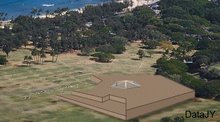
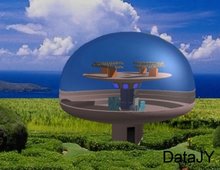

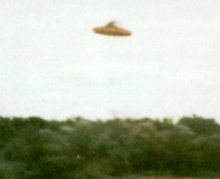


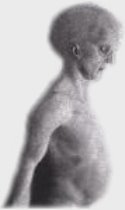
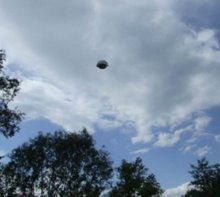













No comments:
Post a Comment